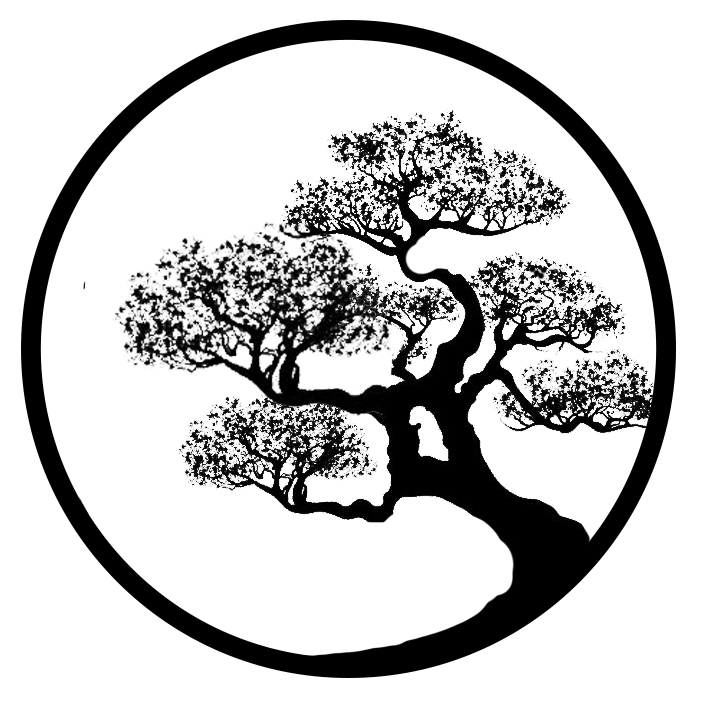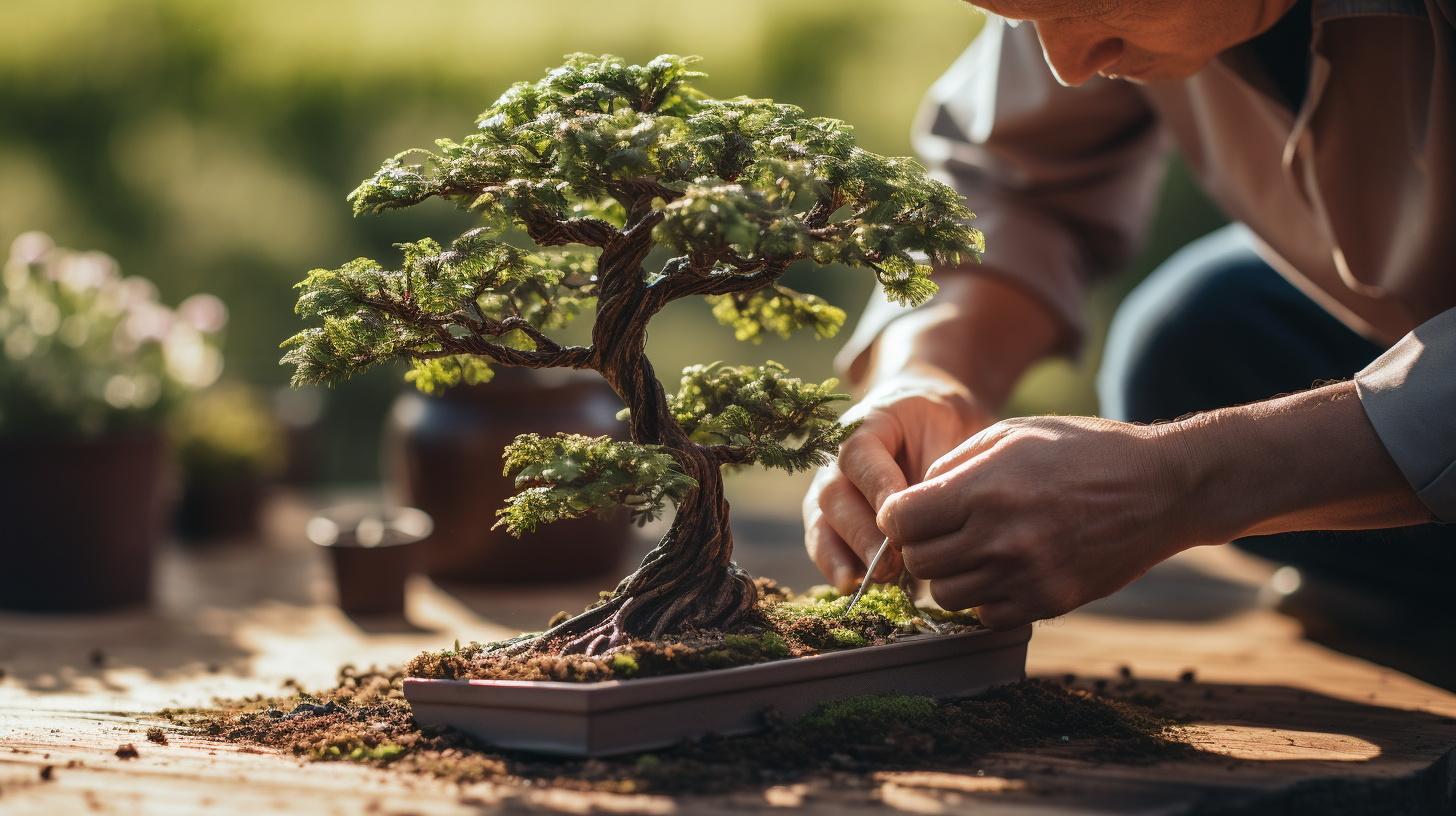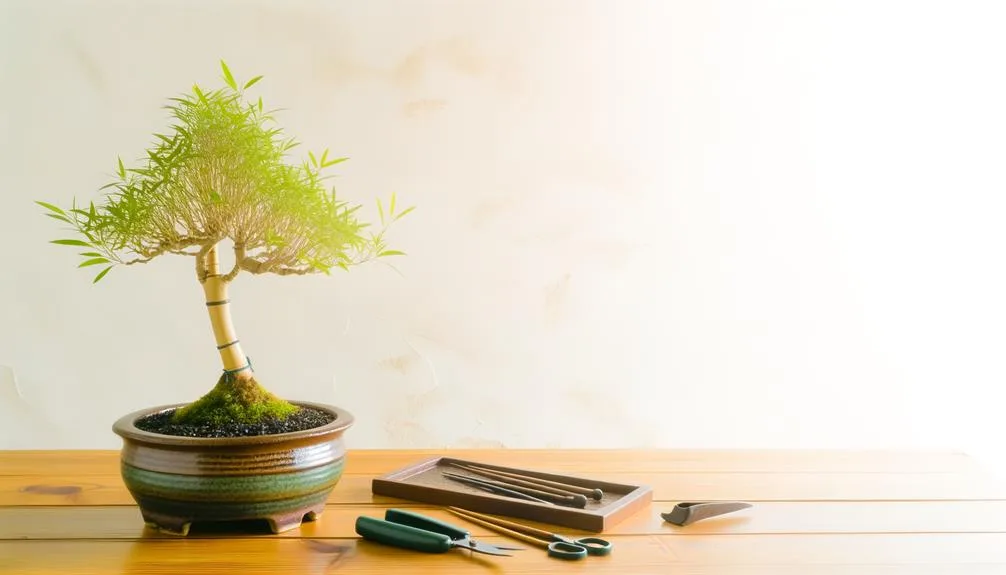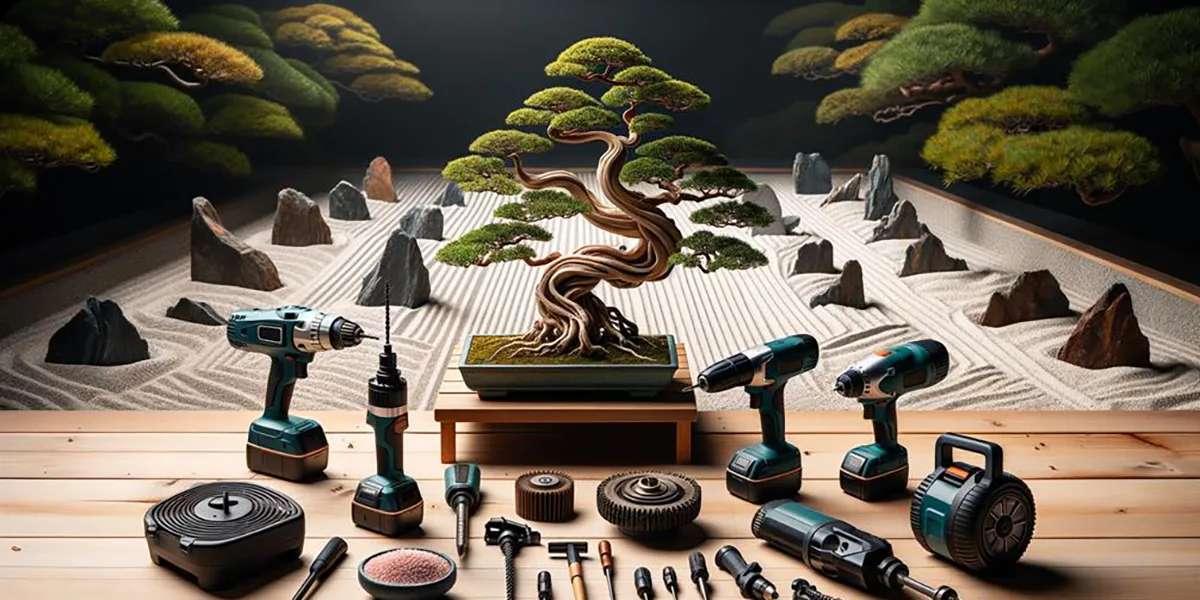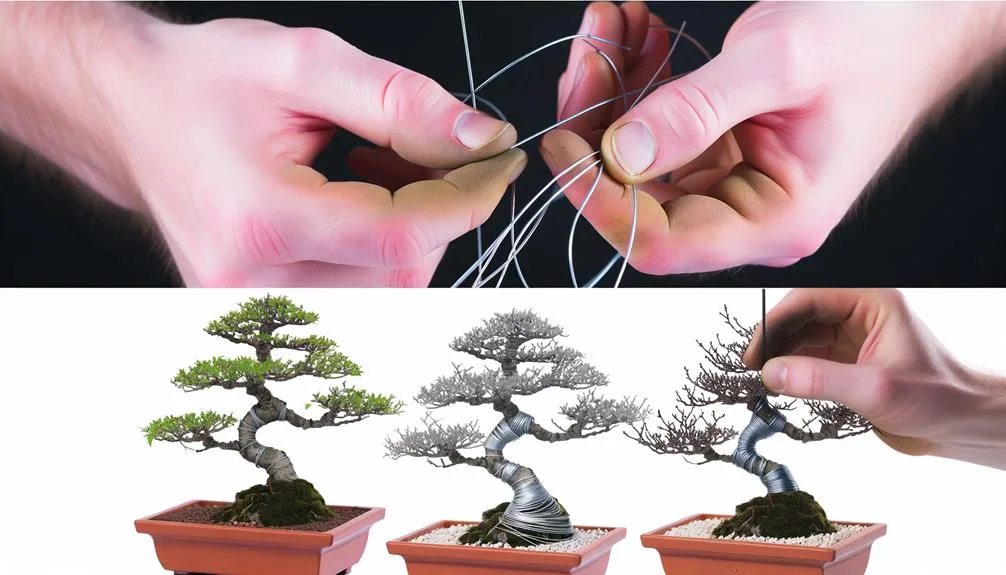Shaping a bonsai tree can be accomplished using three effective techniques.
Pruning, for instance, allows you to control the growth and structure of your tree by trimming unwanted branches and leaves.
Another method, wiring, by wrapping wire around the branches, allows you to manipulate and set the parts of the bonsai tree into a desired shape, creating a unique and artistic form for your juniper bonsai.
Additionally, defoliation, when done correctly with appropriate bonsai tools, can stimulate new growth and refine the overall appearance of your bonsai.
These three techniques are essential for maintaining the aesthetic appeal and health of your bonsai, and mastering them will help you achieve the desired look for your miniature tree.
Key Takeaways
- Pruning, wiring, and defoliation are essential techniques for bonsai maintenance.
- These techniques help control the growth, maintain aesthetic appeal, and refine the appearance of the bonsai tree.
- Mastery of these techniques is important to achieve the desired look and promote overall health of the bonsai tree.
- Proper selection of techniques based on the type of tree is crucial.
Pruning Techniques
To maintain and possibly change the shape and size of your bonsai tree, you should regularly prune its branches and foliage. Maintenance pruning, especially the lower branches, is essential for directing how the tree grows and sustaining the aesthetic appeal of your juniper bonsai.
Initiate by inspecting your juniper bonsai and pinpointing any parts that needs pruning bonsai which could be overgrown or unwanted parts of the tree. Use sharp, clean concave cutters to carefully prune the bonsai tree, always cutting at a 45-degree angle to promote quicker healing.
Furthermore, remove any yellowing or dead foliage around the branch to stimulate new growth and bolster the juniper bonsai’s health under maintenance pruning. As you prune, step back occasionally to assess the tree’s overall shape and ensure you’re achieving the desired look.
Wiring Methods
You can further refine the shape of your bonsai tree by employing proper wiring methods, which complement the pruning techniques discussed earlier. When wiring your bonsai tree, keep in mind the following:
- Select the Right Wire:
- Use anodized aluminum wire for deciduous trees and annealed copper wire for coniferous trees.
- Choose a wire that’s about one-third the thickness of the branch you’re wiring.
- Wrap the Wire Properly:
- Start at the base of the branch and gently wrap the wire at a 45-degree angle, making sure not to overlap.
- Avoid wrapping the wire too tightly to prevent damage to the tree.
Proper wiring allows you to guide the growth of your bonsai tree, creating the desired shape with precision.
Defoliation Practices
When shaping your bonsai tree, defoliation practices can be utilized to encourage new growth and refine the overall appearance of the tree. By selectively removing leaves, you can stimulate the growth of smaller leaves and encourage ramification, which is the development of finer branches. It’s important to defoliate your bonsai at the right time, typically during the growing season, to avoid stressing the tree. Here’s a simple guide to help you understand the defoliation process:
| Step | Description | Timing |
|---|---|---|
| Selecting | Choose healthy branches and leaves to defoliate. | During the growing season. |
| Removing | Carefully pluck the leaves from the branches. | When the leaves are mature. |
| Aftercare | Ensure proper sunlight, humidity, and watering to support new growth. | Throughout the growing season. |
Advanced Techniques for Shaping a Bonsai Tree
Creating Deadwood for Dramatic Effect
Deadwood techniques, such as Jin and Shari, are used to create areas on the bonsai that mimic the effects of aging and natural wear. Jin involves stripping a portion of the branch to expose the bare wood, while Shari refers to creating a strip of deadwood along the trunk. These techniques add a sense of maturity and natural ruggedness to the bonsai, enhancing its aesthetic appeal. The process requires careful stripping and carving of the wood, followed by treatment to preserve the deadwood and prevent decay.
Developing Nebari (Surface Roots)
Nebari, or surface roots, contribute significantly to the visual impact of a bonsai. A well-developed Nebari gives the tree a grounded, stable appearance, suggesting age and strength. Developing Nebari involves techniques like root pruning and repotting to encourage the roots to spread evenly around the base of the trunk. This process can take several years, requiring patience and consistent care.
Bonsai Forest and Rock Planting
Creating a bonsai forest or engaging in rock planting are advanced techniques that involve growing multiple trees together or planting trees on rocks to create a miniature landscape. These styles require a deep understanding of balance, proportion, and harmony to replicate a natural scene. The key is to select trees that complement each other in size and shape and to arrange them in a way that tells a story or creates a natural-looking scene.
Caring for Your Shaped Bonsai
Post-Shaping Maintenance
After shaping your bonsai through pruning, wiring, or defoliation, it’s crucial to provide it with the right care to ensure its health and growth. Regular watering is essential, but the frequency and amount depend on the species, size, and climate. Over-watering can be as harmful as under-watering, so it’s important to understand the specific needs of your bonsai. Feeding your bonsai with the right fertilizer at the right time of year is also key to its health. Balanced, slow-release fertilizers are often recommended for consistent growth.
Troubleshooting Common Issues
Even with careful maintenance, bonsai trees can encounter issues like pest infestations, diseases, or growth problems. Early detection and correct diagnosis are vital for effective treatment. Common signs to look out for include discolored leaves, stunted growth, or visible pests on the tree. Consulting bonsai care guides or experts can help in identifying and addressing these issues promptly. Remember, the health of a bonsai is a reflection of the care and attention it receives.
Frequently Asked Questions
How Do I Choose the Right Pot for My Bonsai Tree?
You’ve got to consider the size and style of your bonsai tree. A good rule of thumb is to choose a pot that’s about 2/3 the height of the tree’s trunk. This ensures a harmonious balance.
What Are the Best Methods for Repotting a Bonsai Tree?
What Type of Soil Is Best for Bonsai Trees?
For bonsai trees, the best soil is well-draining and allows air to reach the roots. A mix of akadama, pumice, and lava rock works well. It provides good moisture retention while preventing root rot. Consider this mix for healthy bonsai growth.
How Do I Ensure My Bonsai Tree Gets Enough Sunlight and Water?
Make sure your bonsai gets enough sunlight by placing it in a spot with at least 5 hours of direct sunlight daily. Water when the top inch of soil is dry, ensuring the water reaches the roots.
Are There Any Specific Techniques for Shaping the Roots of a Bonsai Tree?
To shape the roots of your bonsai tree, carefully prune and trim them to encourage a healthy, balanced root system. Root pruning and repotting will help maintain the tree’s size and shape while promoting optimal growth.
